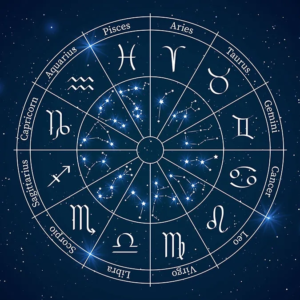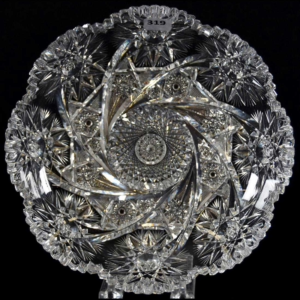Jais – properties, virtues & benefits
Discover the Jaïs, a fascinating prehistoric relic with mysterious engravings, located in Brittany, which has aroused the curiosity of researchers and history buffs for decades.
CHARACTERISTICS OF JAY
- Chakra: Root.
- Properties: Protection, Anchoring, Stability.
- Astrology: Saturn.
- Zodiac: Capricorn.
- Elements: Earth.
- Colors: Gray, Brown, Black.
- Hardness: 7 on the Mohs scale.
- Chemical Formula: Calcium magnesium silicate.
- Associated god: Cernunnos.
JAÏS – HIS STORY
Jais is an ancient mineral on Earth, estimated to be 208 to 144 million years old, resembling amber in many respects. It is mainly derived from sedimentary rock containing fossilized plant remains. This rock has been mined since the Bronze Age, and has enjoyed great renown among various civilizations over the centuries. As early as the 2nd millennium BC, it was highly prized in England, where the world’s best deposits were found. The Romans also discovered this stone and quickly adopted it for jewellery-making in Rome. In the Middle Ages, monotheistic religions incorporated jet into jewelry and religious statuettes, giving it an added symbolic dimension. The stone was also used in a similar way in North America, where excavations have revealed the existence of protective amulets among the Indians.
In the 19th century, Jais enjoyed a boom period in Europe. The English had a production center in Yorkshire and exported their stones around the world for their superior quality. Other deposits can be found in Spain (Asturias), southern France, Russia, China and California. However, the mineral’s delicate texture makes industrial production difficult. In order to work the material professionally and produce quality jewelry and figurines, sculptors, jewelers and cutters have developed specific techniques. They established groups in Compostela to sell religious accessories such as crucifixes and mourning medals. Generally speaking, jet was used for funeral jewelry. In France, it was even the only type of jewelry permitted after a death in the 19th century. The mineral flourished during the Victorian period and into the early 20th century. In 1895, the Indochina region alone produced 6.2 million tons of jet. Interest in the stone waned after the First World War, and cutters and small businesses closed one after the other, disappearing completely in the 1950s. Nevertheless, jet is enjoying a revival today, with some silversmiths rediscovering traditional techniques to produce fine jewelry and religious effigies worthy of the Victorian era. Shapes remain traditional, such as shells, statuettes of St. James, pendants, holy-water fonts, rosaries and rosaries.
LEGALS ABOUT THE JAYSTONE
Lignite, with its distinctive metallic luster, has been associated with magical functions by various civilizations. Its wearing is often recommended to relieve certain afflictions, but sometimes advised against due to bad omens. Because of its color, it is associated with the element Earth and has the ability to generate electricity when rubbed. In prehistoric tombs, it is thought that this mineral was used to protect and defend the bones of the dead. In ancient Greece, people wore this jewel to win the favor of the goddess Cybele, who was responsible for growth and plants. Gardeners in particular followed this belief for centuries.
In medieval England, fishermen’s wives used lignite as a magical protector to be burned in the fireplace to protect their absent husbands from the ocean’s wrath. In general, jewelry of this type was considered to be protective amulets or mourning jewelry. They were used sparingly, as it was thought that if they fell into the wrong hands, the owner could be manipulated. Moreover, they contained negative emotions from the past that could be harmful to remember. Lignite was also associated with witchcraft and sacrificial practices, such as the use of Jet knives with a black metallic sheen for ritual sacrifices at Stonehenge.
JAÏS – ITS ORIGIN AND COMPOSITION
The name jet comes from the Latin “gagâtes”, meaning “stone from Gages”, a town in Lycia, the historic region of present-day Turkey, where a black rock similar to bitumen was found. The term “gagates” was mentioned by Pliny the Elder, and gave rise to “iaiet” and “jayet” in Old French, then “jais” in modern French. In French-speaking Switzerland, the term “jayet” is also used. In German, the word has remained “gagat”, but the English now call it “jet”, having previously referred to it as “geate”, “geat” and “jeat”. For a long time, jet was also known as “black amber” as it is often found in the same deposits as amber and has similar electrical properties.
Jais is formed from plant debris transformed into charcoal in a muddy environment, then undergoes compression. It is found in bitumen-like shales, in the form of relatively fine platelets (around 2 to 15 cm thick). Its formation is due to oceanic pressure on rocks containing fossilized plant remains.
Jais is an amorphous material, with a refractive index of around 1.66 and a density of around 1.3 (relative to water). Its luster varies from waxy to vitreous. When burned with a heated needle, it gives off a strong charcoal odor. To distinguish real jet from imitations, a line can be drawn with it, which should be brown. In the 17th and 18th centuries, working this mineral was one of the main craft activities in certain regions of Europe, such as in the Pays d’Olmes, in the French department of Ariège, where several “jet mills” were powered by water.
.

JAYSTONE – VERTIES AND PROPERTIES
YAI ON THE PSYCHOLOGICAL LEVEL
Jais stone has historically been considered the ultimate mourning stone, whether worn as a necklace or bracelet. It is reputed to help overcome the grief associated with death, as well as loneliness. It can help to overcome chronic sadness and navigate positive change. It can also strengthen physical awareness against the evil eye. More generally, jet is a stone that ward off evil sPirits and negative emulations. It protects against bad luck and can be a good defense against evil spells or unknown entities. A jet bracelet or necklace can be worn by a dying person to help them pass to the other side, and the glass-like mineral is also sold and used as a tool for communication with the afterlife by those with psychic gifts. However, this use must be exercised with caution and for no more than fifteen minutes, or risk attracting the evil eye.
Jais can also be used for protection rituals by placing it between two white candles or wearing it as a bracelet, as it absorbs negative energies and can serve as a protector for the home when placed in the heart of the dwelling. It can also be used for mental and physical health. For example, if placed momentarily on an infant’s stomach, it can provide lasting protection against any negative effects. It is also used to ward off bad dreams and guarantee a restful night’s sleep by placing it under the Pillow or hanging it with a wire or Piece of metal over the bed or from the headboard. To ward off danger during a journey, a jet amulet can also be worn.
From a psychic point of view, jet can also be used. For this, small Pieces of jet can be placed in shavings in a bottle filled with water and left in the sun for several hours until the water becomes hotter. The liquid can be filtered and drunk just before attempting to contact one’s psyche. Small, powdered quantities can also be added to psychic-related incense or used as incense immediately on a burning coal. In this case, the smoke serves as a medium for clairvoyance. To accompany a dying person on their journey, jet can be combined with azurite, laPis lazuli or intense blue sapphire. It’s a good idea to keep a large black tourmaline crystal (schorl) or an obsidian on your person or at your feet, to ensure a smooth return from this journey of accompaniment.
.
PHYSICAL JAY
In lithotherapy, jet is considered a stone with healing properties for various ailments such as toothache, stomach pain, gastric acidity and headaches. It is also preventive against nervous disorders when worn before the onset of attacks. This unique mineral also has soothing properties for tissue lesions, particularly those affecting the lungs. Wearing a jet mesh pendant over the solar plexus chakra can help relieve gastric acidity and regulate the digestive system, particularly the intestines. Continuously wearing a black jet mesh pendant or bracelet can prevent physical dysfunctions by maintaining a positive energy flow in the body.

JAÏS – CLEAN AND RECHARGE
Jaïs Stone is a natural stone that can absorb surrounding energies, so it’s important to clean and recharge it regularly. Here are a few methods for doing so:
Cleaning:
- Rinse the stone under running water for a few minutes
- Plunge it in salt water for a few hours
- Place it on a cluster of quartz or rock crystal for a few hours or overnight
.
Loading:
- Place the Jaïs stone in sunlight for a few hours (caution, some stones may discolor in the sun)
- Place it on a cluster of quartz or rock crystal for a few hours or overnight
- Place it in a Tibetan bowl and resonate the bowl to recharge it with sound
.
Choose the method that suits you best and remember to clean and recharge your Jaïs regularly to take full advantage of its benefits.
WHERE DOES THE NAME JAÏS COME FROM?
The name “Jaïs” comes from the ancient Greek “iasPis” meaning “mottled stone”, referring to its characteristic inclusions and mottling. Jaïs Stone is also known as Green Jasper or Indian Jasper, as it was first discovered in India. Today, it is also mined in other countries such as Madagascar, South Africa and Australia.
WHICH CHAKRA DOES JAY ACT ON?
Jaïs is mainly associated with the heart chakra, located in the center of the chest. This stone is considered a heart chakra healing stone and can help open and balance this chakra. Jaïs is believed to promote inner peace, enhance love, empathy and compassion, and help soothe negative emotions such as anger, jealousy and sadness.
WHICH ASTROLOGICAL SIGN IS ASSOCIATED WITH JAY?
Jais is associated with the zodiac sign Sagittarius. Sagittarians can use this stone to boost their optimism, self-confidence and adventurous sPirit. Jaïs Stone can also help Sagittarians open their hearts and express their true loving and compassionate nature.
SUMMARY OF THE JAYSTONE
Jaïs stone, also known as jet, is not considered a traditional lithotherapy stone due to its organic rather than mineral nature. However, it is sometimes used in modern lithotherapy for its healing and sPiritual properties.
Jais is often associated with protection and the elimination of negative energies. It is also considered an anchoring stone, helPing to connect the physical body to the earth and balance the root chakra.
On an emotional level, jet is reputed to bring calm and serenity, as well as helPing to overcome fears and anxieties. It is also considered beneficial for emotional healing after trauma or loss.
In lithotherapy, the jaïs stone is often worn as jewelry or placed in a meditation or healing space. However, it’s important to note that each person is unique and the effects of stones can vary depending on the individual and how they are used.

